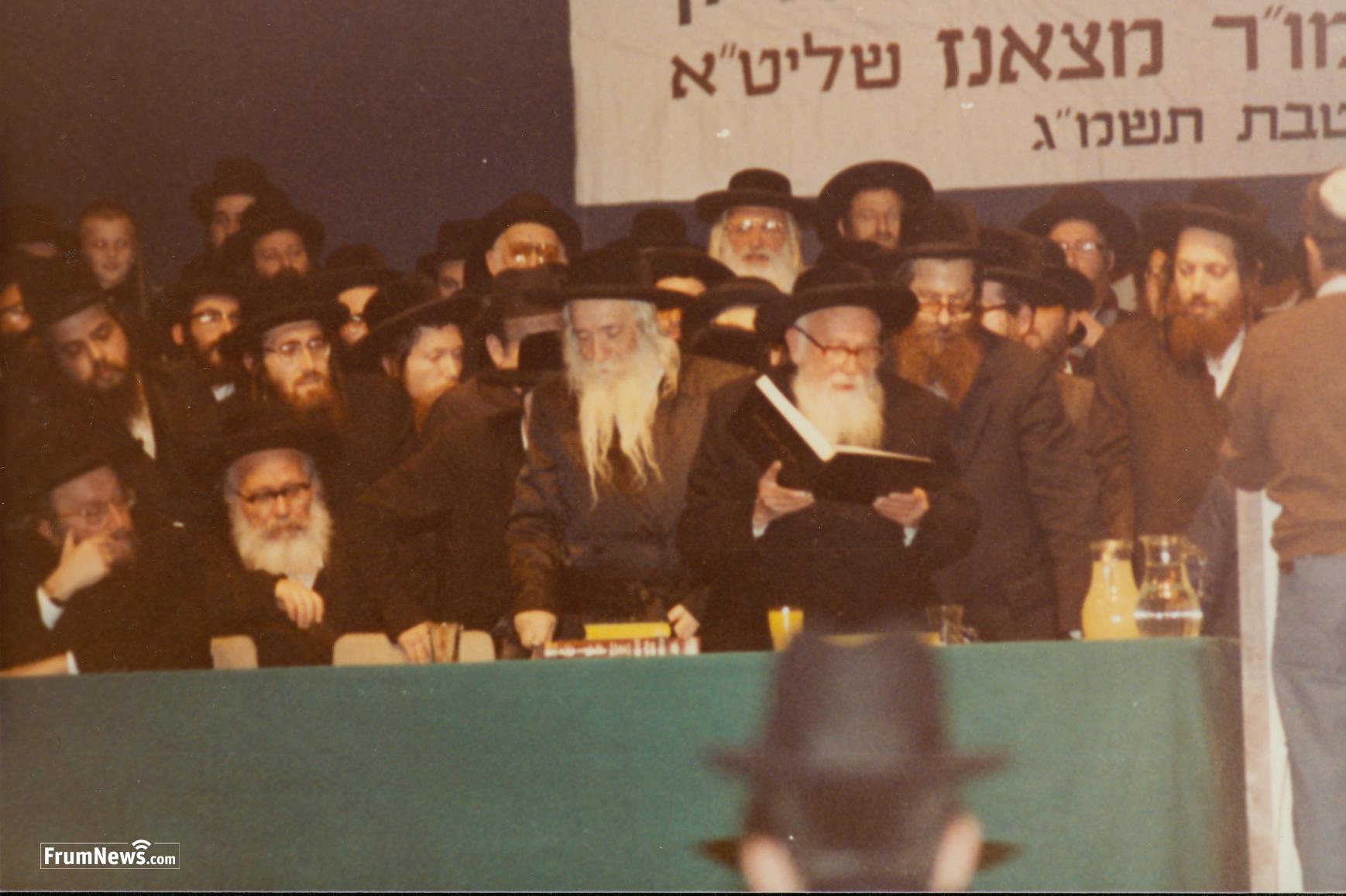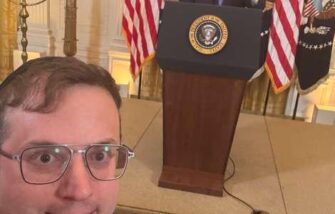Portraits of Gedolim – Rav Shlomo Zalman Auerbach ZT”L

Today, 20 Adar, is the yahrtzeit of Rav Shlomo Zalman zt”l, he lived his whole life in Yerushalayim, towards the end of his life yidden from all over flocked to hear Rav Shlomo Zalman’s wisdom. A brilliant posek with expertise in every area of halachah
Via Agudas Yisroel
Today, 20 Adar, is the yahrtzeit of Rav Shlomo Zalman Auerbach. Rav Shlomo Zalman zt”l lived his whole life in the city of Yerushalayim. While he spent most of his years as Rosh Yeshiva of Yeshivas Kol Torah virtually unknown, towards the end of his life yidden from all over flocked to hear Rav Shlomo Zalman’s wisdom. A brilliant posek with expertise in every area of halachah, Rav Shlomo Zalman’s every interaction was conducted with the utmost sensitivity.
At the 2021 Agudah Convention, Rabbi Yerachmiel Fried, Rosh Hakollel, Dallas, author of Yom Tov Sheini Kehilchaso and Maadanei Shlomo (pesakim heard from R’ Shlomo Zalman), shared personal vignettes about Rav Shlomo Zalman. Please enjoy this adaptation of his remarks.
Torah
You can’t talk about Rav Shlomo Zalman without talking about Torah. Once when I got in the car, I saw Rav Shlomo Zalman was unusually b’simchah, even beyond his constant state of simchah, and I could see he was excited about something. As we were driving, he told me – he thought that after 50-60 years paskening shaalos on yom tov sheini, he’d heard it all. But today, “I got a new shaaleh on yom tov sheini I’ve never gotten before.” He was full of simchah because of the question.
Every Tuesday, I was zocheh to drive Rav Shlomo Zalman home from the yeshiva, something I arranged with his son-in-law in order to work on a sefer on yom tov sheini. Because of Rav Shlomo Zalman’s hakaras hatov to me for driving him, he would speak to me about my sefer during the ride between yeshiva and his house. He put many, many hours into it, going over everything inside and making sure that everything was exactly the way he wanted it to be stated.
When the sefer was finished, a second sefer – Maadanei Shlomo – came out from other questions we had discussed and hanhagos I had observed. Two seforim, all just during his in-between time, just getting from yeshiva to home. I saw from that, that other’s lives can be built from the “in-between times” of Gedolim!
Rav Shlomo Zalman had a rare nerve disease for most of his life, that he described as the feeling of a snake bite in his face when it would flare up. The pain was excruciating; it would completely overtake him, and he would nearly collapse. Once, on the way home, I told him I had a shaaleh which is pikuach nefesh. Just then he was struck by an attack of this disease. Immediately, I offered to take the Rosh Yeshiva home but he refused; he said instead I should pull over and wait out the attack. I persisted, but Rav Shlomo Zalman said, “You said it is pikuach nefesh – we can’t go home, I have to answer the shaaleh.” We pulled over to the side and waited until the pain diminished somewhat, and he said, weakly, “Ok – ask the shaaleh.”
What we know about Rav Shlomo Zalman’s gadlus in Torah is just the tip of the iceberg. One thing that I think was a small window into his greatness was something that often happened when I would ask him a shaaleh or give him something to look over. He would direct me to look at a certain Magen Avraham – one of the main meforshim in Shulchan Aruch – but when I would go and look at that Magen Avraham, it would seem to have nothing to do with what we were talking about. I didn’t understand. I would look at it again and again – what is going on over here? And then, at the end of the Magen Avraham it would say ayin sham, take a look somewhere else, and I would look at another Magen Avraham or wherever he would send me to, and then that would send to another ayin sham, and after a few ayin shams it would paint a whole picture that applied exactly to what we were talking about. Rav Shlomo Zalman had on his fingertips not only what the Magen Avraham says in the four chelkei Shulchan Aruch, but he also had all the ayin shams of the Magen Avraham, everywhere the Magen Avraham sends us to. He had all that on instant recall!

“Ich Fargessen”
At the end of his life, Rav Shlomo Zalman would say “Der kop arbet nisht, ich fargessen – The head isn’t working, I’m beginning to forget.” One of his talmidim, Hagaon Rav Yehuda Addas, Rosh Yeshivas Kol Yaakov Yerushalayim, said in his hesped for Rav Shlomo Zalman, that he asked R’ Shlomo Zalman, “What does it mean the Rosh Yeshiva was forgetting?” He would start talking about something and he could throw out dozens of mekoros without end; I could not understand what he meant, Rav Addas said. Rav Shlomo Zalman told Rav Addas, in his very humble way, that whenever a shaaleh would come up, Hakodosh Boruch Hu endowed him with the ability to zero in on what was applicable to that shaaleh. And in the last year, this ability became a little bit rusty; his direct instant recall didn’t include kol haTorah kulah.
His son-in-law, Hagaon Rav Y. R. Borodiansky, mashgiach of Kol Torah Yeshiva, told me that at one point Rav Shlomo Zalman stopped giving the shiur klali in the yeshiva and he only gave the shiur yomi, saying, “In the shiur yomi, the everyday shiur, people know that I am just speaking in learning, I don’t intend to pasken anything. But in the shiur klali, since it is a little more public, people might think that I am paskening. And since now de kop arbet nisht, maybe I will forget a Tosfos.” R’ Borodiansky continued, do you realize what this means? Until then it was not possible for Rav Shlomo Zalman to forget a Tosfos! But now maybe he will forget a Tosfos somewhere in Shas and perhaps say something that he should have remembered more information on, so he was afraid to say a shiur klali! (R’ Borodiansky was making a further point to me, to see the Yiras Shomayim of his shver, that he was afraid to speak at all in case he might forget a Tosfos!)
Precision
He had such a wide spectrum of subtleties and lived in a world of subtle nuances. Today, we live in an olam hagas, a very coarse world. Rav Shlomo Zalman would often lament that in our generation everything is black and white, asur or muttar; the subtleties have been lost. Once in a conversation with him, I said that the Rosh Yeshiva said it is asur to do something. He said, “Lo amarti assur, amarti mechuar hadavar hazeh – I didn’t say it is forbidden, I said such a thing is ugly.” He had a whole spectrum of such terms for things one should do, and an entire spectrum of terms describing things one should not do.
Once I was speaking to Rav Shlomo Zalman about those who don’t carry in the eiruv in Yerushalayim. “Eileh she’l’chatchila lo metaltelim b’eiruv….” He stopped me and said, “You can’t say l’chatchila on something that the Mishnah Berurah permits. ‘Eileh she’machmirim al atzmam – those that are machmir on themselves,’ that you can say.” Only then was I able to continue with the shaaleh.
One time we were discussing whether to include a certain shaaleh in the sefer Yom Tov Sheini regarding a certain leniency. After a while, he said, “It’s okay, I don’t have such pachad to put it in because it’s not like Shabbos, it’s only yom tov sheini. It is d’rabbanan, it’s okay to put it in.” Many months later we were discussing a different shaaleh, also with a leniency, and he said, “I have pachad to put this leniency in the sefer.” I asked, “I thought the Rosh Yeshiva said that he doesn’t have a pachad to say a kula for yom tov sheini?” Rav Shlomo Zalman corrected, “I said there is not pachad like Shabbos, but “pachad yeish”, fear there is!”
Every subtlety was so important to him. Everything he said or wrote was precise.
As a Rebbi
Rav Shlomo Zalman was the rebbi par excellence. Although I never actually learned in his yeshiva, he was always a rebbi, always pushing me to grow. I have a friend who went to him once with a shaaleh. Rav Shlomo Zalman looked at him and asked, “I don’t understand. You are a good yungerman, you are sitting and learning. Why are you asking me this? Why don’t you know it yourself?” He would push us: “Why are you relying on me? What do you need my seichel for, use your own seichel!” Of course, after you would think something through and come back to him, then he would discuss it with you, but if you were just asking him, he would say, “First think about it, then we’ll speak.”
Ahavas Yisroel
His ahavas Yisroel was legendary. There was once a young law student from Chicago who was coming to Eretz Yisroel for a few weeks. I suggested that he meet with Rav Shlomo Zalman, but the young man said he was scared. I reassured him that he didn’t have to speak with the Rav, that just to see such a person is great. After I sent him to Rav Shlomo Zalman, I asked him what happened. He said, “It was an especially short line that day. When I got there, his son said he was already eating and couldn’t be disturbed. I told his son I didn’t want to disturb him, just see him. He told me, “You just want to see him, he’s in there, you can take a look.” So I poked my head in to look. Then Rav Shlomo Zalman called out to his son, ‘Who was that?’ He answered, ‘An American who wanted to see you.’ Rav Shlomo Zalman replied, ‘He wanted to see me, I want to see him, too.’” The young man poked his head back in and Rav Shlomo Zalman exclaimed, “Ah, a yiddisher panim!” He had so much simchah to see another Jew.
Once on the way home we passed the Shaarei Tzedek Hospital, and he asked me if we could stop so he could be mevaker cholim for a chashuva rov who was there. Of course, I agreed, and the Rosh Yeshiva requested that we drive around through the back entrance, to avoid people recognizing him, so it wouldn’t take so long. I didn’t know the area so well, and we ended up near the front entrance. By the time we got to the elevator, many, many people were thronging around us, asking shaalos and hoping for brachos. Finally, we entered the elevator, and he said, “You see, I told you it would take a long time if we go through the front entrance!” We made it to the person Rav Shlomo Zalman wanted to visit, who was delighted to see him, and on our way out I offered to find the back exit. He declined, saying that people had already seen him, it doesn’t matter at this point. I apologized to the Rosh Yeshiva for taking so much time going in the wrong entrance, to which he responded, “For me, it is a pleasure to see people I know – it is you I was upset about. Why should you waste so much of your time waiting for me?!”
One time we passed a bachur looking to hitchhike near Shaare Tzedek hospital to the Chevron Yeshiva. I had Rav Shlomo Zalman in the car, a chashuv gadol b’yisroel, and I had not the slightest intention of stopping the car to chauffeur anyone else. As we passed by the bachur, he saw who was in the car and took a step back, and I continued driving. Rav Shlomo Zalman asked, “Why didn’t you stop for him?” I told him I thought the bachur had changed his mind, but Rav Shlomo Zalman would not take that for an answer. “I don’t understand – why didn’t you stop for him?” The whole rest of the car ride, he stared straight ahead, saying over and over, “Eich lo ozerim l’Yehudi she’tzarich ezrah? How can you not help a Jew who needs help?”
The Light of Rav Shlomo Zalman
Once I was zocheh to be by Rav Shlomo Zalman for shalosh seudos. He didn’t use the electricity on Shabbos, (although he held it was mutar), so as shalosh seudos went on, it got darker and darker, until you couldn’t see anyone else in the room. Except for Rav Shlomo Zalman – his face continued to glow, even in the dark. Chochmas adam ta’ir panav, he had the glow of Torah on his face which was visible!
It’s been over a quarter of a century since the passing of this gadol b’Yisroel, but his light continues to illuminate us through his incredible seforim, through all the seforim that quote him, through the seforim about him, and through all his talmidim. May we merit to bask in some of that light.
Read Next trending_flat
 Lakewood
Lakewood




Post the first comment!